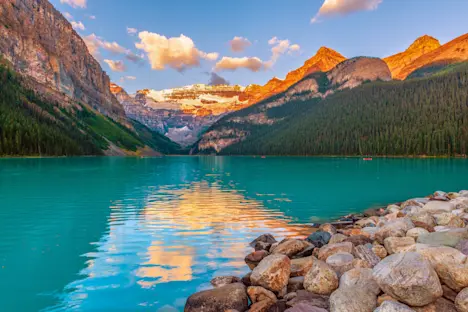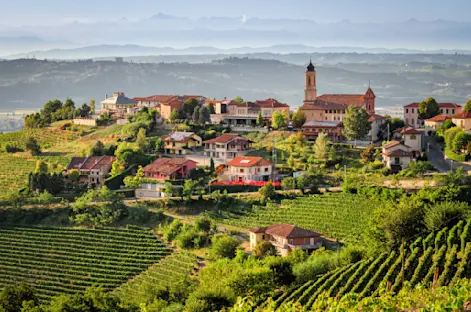Itinerary
Capture Churchill’s summer wildlife and tundra wildflowers on this nature photography intensive along Hudson Bay. Photograph hundreds of beluga whales in the Churchill River and seek shots of roving polar bears on land, along with other Arctic animals. Our Expedition Leader is an expert nature photographer and instructor, offering personalized coaching and evening lectures on wildlife and landscape photography.

Arrive in Winnipeg and transfer to the Fort Garry Hotel, built in 1913 by the Grand Trunk Pacific Railway. The French-style chateau is still the grande dame of Winnipeg, offering gracious hospitality in Manitoba's capital. Once a fur-trading post and trade hub where the Assiniboine and Red rivers meet, today Winnipeg is a thriving cultural and commercial center on the eastern Canadian prairie. Gather with your Expedition Leader for a welcome dinner on this first evening of your northern summer photo safari.
Fly north this morning by private chartered plane to Churchill, a remote community inaccessible by road and the gateway to Manitoba's Arctic. Spend the day exploring this frontier outpost that grew up when the rail line was built to Hudson Bay in 1929, facilitating the transport of grain from the prairies to a new port facility. Photogenic murals cover many of the town buildings, and the Itsanitaq Museum, showcasing the region's Indigenous cultures with artifacts collected from centuries of habitation, is a highlight of our tour. We also meet with local residents to gain insight into their cultural traditions and northern lifestyles. These captivating storytellers share tales from their personal histories, offering a window into the enduring cultures that have flourished in this daunting environment for thousands of years.
Our Expedition Leader offers an introduction to the natural history of the region as we explore the boreal forest, one of three ecosystems that merge around Churchill. This juncture is called an ecotone—the nexus of different ecologically and geographically defined areas—in this case, the boreal forest, or taiga, to the south, Arctic tundra to the northwest, and the marine environs of Hudson Bay on the north. In such a dynamic environment, summer wildlife flourishes, and we go in search of it to photograph over the next several days. On later-season departures, when the sun sets earlier and dark night skies return, there's a possibility we could also get photos of the northern lights if conditions are just right. Churchill lies directly beneath the auroral oval, one of the best places on Earth to photograph the aurora borealis when it is visible.
With Churchill as our base, spend three days chasing photo opportunities on the tundra, river and seacoast of Hudson Bay. Belugas are the uncontested highlight, as more than 3,000 of these small white whales migrate to the mouth of the Churchill River each July and August, congregating where the river meets the bay. We make four separate outings to photograph these gentle cetaceans at thrilling close range. View belugas on two Zodiac trips, then meet them at eye level from a kayak. You’ll also have a chance to float the river on "beluga boards"—buoyant mats that allow us to capture underwater shots with GoPros or other waterproof cameras while wearing a mask and snorkel. These inquisitive whales often nudge our paddles or follow in our human-powered wakes. With their unusual ability to turn their heads from side to side, belugas seem to be as curious about us as we are about them. Through the use of a hydrophone, we can also listen to their otherworldly songs.
Search for wildlife on land, too, as we look for Arctic fox, ptarmigan, caribou and roving polar bears. At this time of year, it is not uncommon to find mothers with cubs roaming the tundra, waiting until the cold temperatures of late autumn freeze Hudson Bay, allowing them to return to the sea ice to hunt seals. The tundra is vibrant in summer, and we'll photograph a riot of wildflowers that dot the green expanse with bright bursts of color.
We'll cross the Churchill River by Zodiac to reach Sloop Cove, once a sheltered haven for wooden sailing vessels used by the Hudson’s Bay Company during the fur trade for exploration, whaling expeditions and northern trading attempts with the Inuit. Iron rings, which were driven into the rocks to secure the sloops, are still visible today, as are names carved into the lichen-covered stone by Company men. From the cove, take a scenic guided walk along the shoreline to view the exterior of Prince of Wales Fort, an important 18th-century HBC trading bastion that is now a National Historic Site. Built in 1717, its ruins occupy an area first scouted by Danish explorer Jens Munk in 1619 on his quest for the Northwest Passage. The fort became an important commercial hub and a key locale in the opening of the Canadian West as British and French forces vied for territorial control.
Our chartered flight back to Winnipeg leaves this afternoon, allowing plenty of time to do more in Churchill today. Meet a local musher and his lively team of sled dogs we learn about this historic mode of northern transportation, and snap action shots as you ride in a wheeled cart pulled by the avid huskies. Pick up some last-minute gifts or souvenirs on the town's main street, where several shops sell locally made handicrafts from leather and beadwork to caribou fur sculptures. Eventually, it's time to head to the airport for our chartered flight back to Winnipeg. Transfer to the Fort Garry Hotel, where we gather for a farewell dinner this evening.
After breakfast, our Arctic summer photo tour comes to a close with a transfer to the airport to meet homeward flights.
Please note: Specific itinerary timing may vary and activities may happen in a different order from what is listed, but inclusions are the same.

































